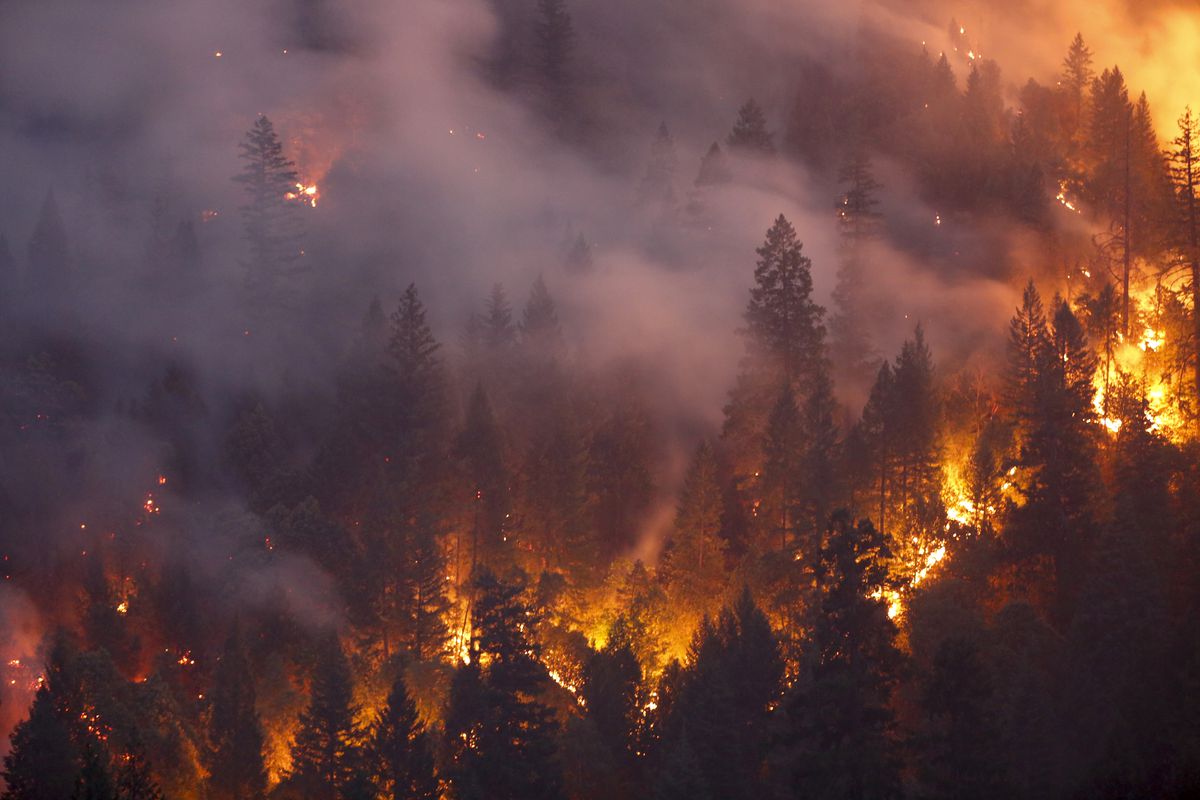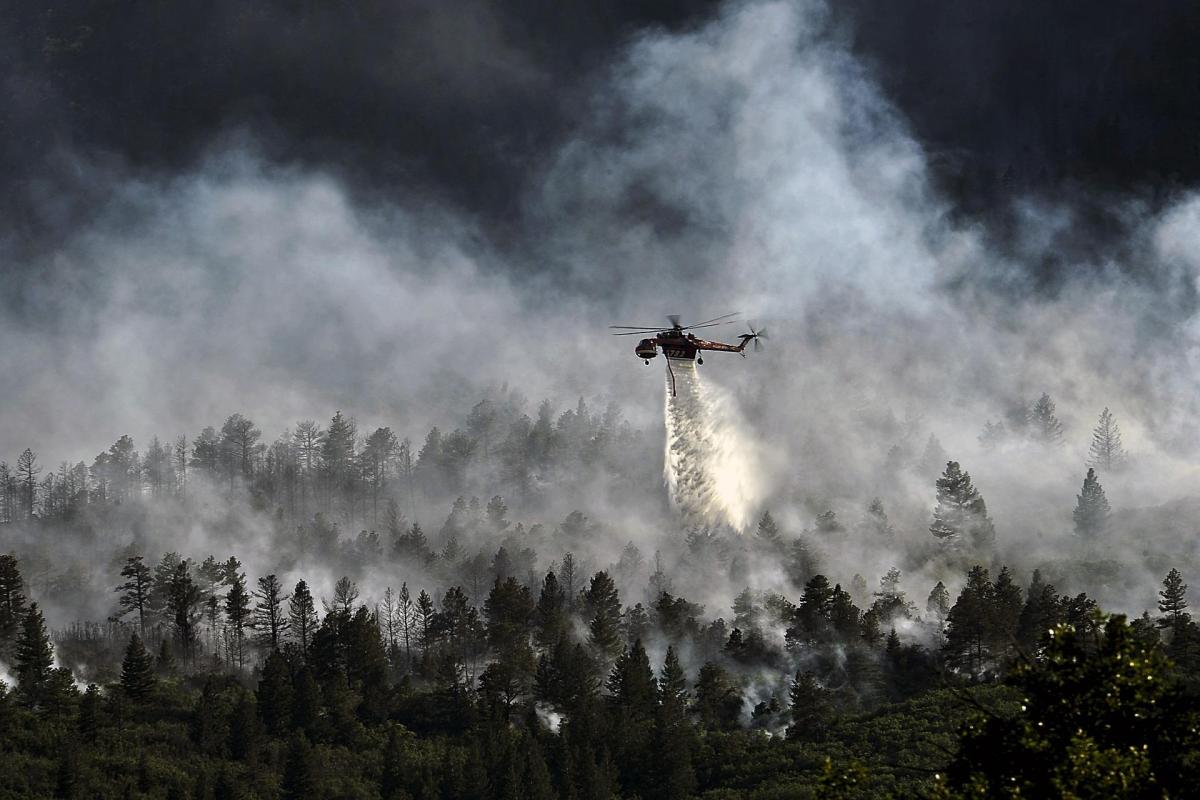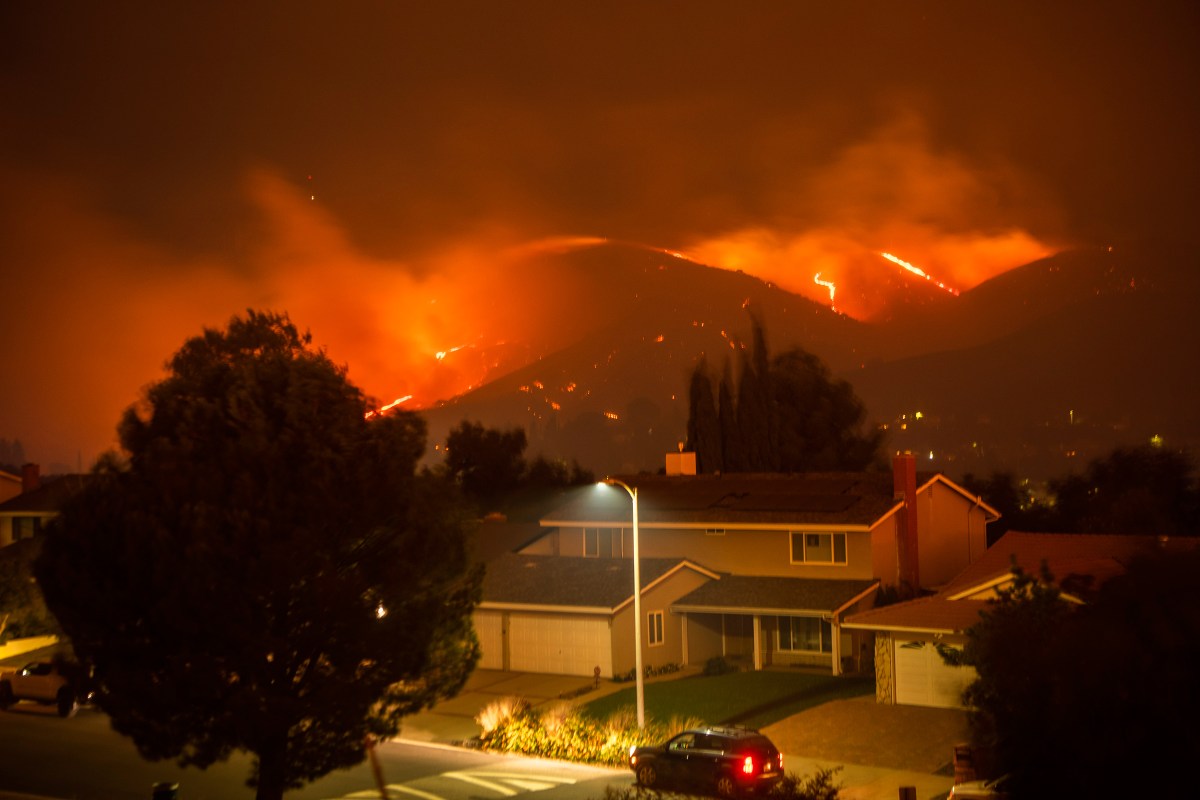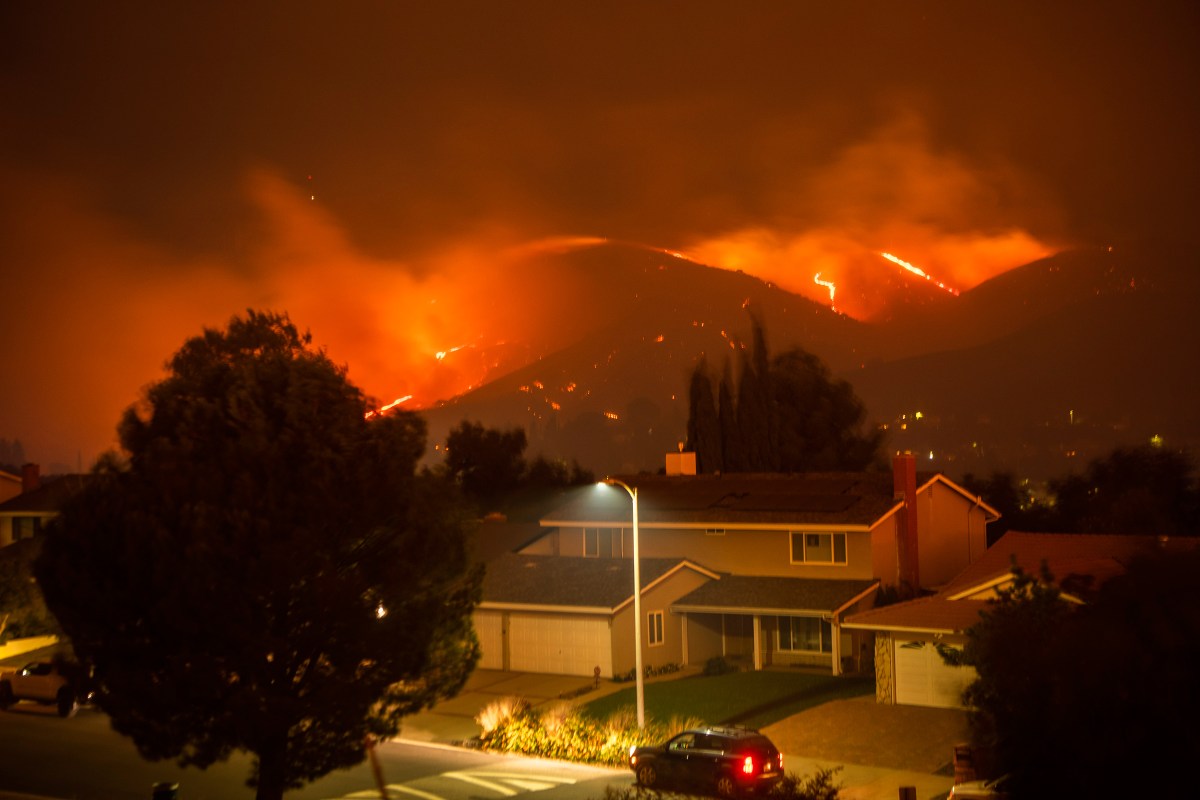Here’s how California has increased forest management and wildfire prevention and mitigation efforts explores the Golden State’s evolving strategies to combat its increasingly devastating wildfire seasons. From historical practices to cutting-edge technology, we’ll delve into the multifaceted approach California is taking to protect its forests and communities. This includes examining the crucial role of fuel reduction, prescribed burns, and community involvement in building resilience against these destructive events.
We’ll also consider the impact of climate change and the ongoing challenges faced by the state.
This examination will cover a range of topics, from the evolution of forest management policies and the implementation of large-scale thinning projects, to the use of innovative technologies and public education campaigns. We will analyze both the successes and challenges encountered along the way, offering insights into how California is striving to balance environmental protection with the safety of its citizens.
California’s Wildfire Management: A Century of Evolution: Here’s How California Has Increased Forest Management And Wildfire
California’s struggle with wildfires is a long and complex story, marked by periods of intense fire activity punctuated by efforts to control and manage these natural events. Understanding the historical context is crucial to grasping the current strategies employed to combat increasingly frequent and severe wildfires.
Historical Context of California Wildfire Management
For much of the 20th century, California’s forest management largely focused on fire suppression. This approach, while seemingly effective in the short term, led to the buildup of significant fuel loads in forests, creating conditions ripe for catastrophic wildfires. Significant legislation like the Clarke-McNary Act of 1924 provided funding for fire suppression, reinforcing this suppression-focused approach. However, shifts in understanding began to emerge in the latter half of the century, recognizing the ecological role of fire in many ecosystems.
California’s boosting its forest management, focusing on controlled burns and thinning to reduce wildfire risks. It’s a different kind of challenge than the one faced in Scotland, where you can read about the recent capture of an illegally released lynx in this NatureScot statement: Illegally released lynx captured – NatureScot statement. Both situations highlight the importance of proactive wildlife management, though the specific issues and approaches differ widely.
Present-day approaches prioritize active forest management, including controlled burns and fuel reduction, acknowledging the limitations of purely reactive fire suppression.
Increased Forest Thinning and Fuel Reduction
Forest thinning and fuel reduction aim to decrease the amount of flammable material available to fuel wildfires. Methods range from mechanical thinning, using machinery to remove smaller trees and brush, to prescribed grazing, using livestock to control vegetation growth. These methods create defensible space around communities and reduce the intensity of wildfires.
| Project Name | Location | Methods Used | Results |
|---|---|---|---|
| Sierra Nevada Fuel Reduction Project | Various locations in the Sierra Nevada mountains | Mechanical thinning, prescribed burning | Reduced fire intensity and spread in several subsequent wildfires. Improved forest health and resilience. |
| Santa Monica Mountains National Recreation Area Fuel Break Project | Santa Monica Mountains | Hand-thinning, mastication, prescribed burning | Created fuel breaks that slowed the spread of wildfires, protecting homes and infrastructure. |
| San Diego County Fuel Reduction Program | Various locations in San Diego County | Mechanical thinning, prescribed burning, community engagement | Reduced wildfire risk in high-risk areas, improved community preparedness. |
Prescribed Burns and Controlled Fires

Prescribed burns, carefully planned and controlled fires, are a crucial tool in reducing wildfire risk. These burns mimic natural fire processes, clearing underbrush and reducing fuel loads while promoting forest health. Meticulous planning, including weather monitoring and firefighter deployment, is essential for ensuring safety and effectiveness. Successful programs exist in diverse California ecosystems, from chaparral shrublands to coniferous forests, demonstrating the adaptability of this method.
Forest Health and Restoration Initiatives

Various initiatives aim to improve forest health and resilience. These include reforestation efforts, planting drought-resistant species, and restoring degraded watersheds. These strategies enhance the overall health of the ecosystem, making it less susceptible to severe wildfires.
- Reduced wildfire risk
- Improved water quality
- Increased biodiversity
- Enhanced carbon sequestration
- Improved forest productivity
Community Wildfire Protection Plans
Community Wildfire Protection Plans (CWPPs) are crucial for safeguarding communities at risk. These plans Artikel strategies for reducing wildfire risk at the local level, including defensible space creation, fuel reduction projects, and community education. Successful implementation involves strong community participation and collaboration with local agencies.
A hypothetical CWPP for a small rural community might include:
- Establishing defensible space around homes.
- Implementing a community-wide fuel reduction program.
- Developing a community evacuation plan.
- Conducting regular wildfire preparedness training.
- Establishing a community communication system.
Technological Advancements in Wildfire Management
Technology plays a significant role in wildfire management, from early detection to suppression efforts. Remote sensing technologies like satellites and drones provide real-time information on fire location and spread. Geographic Information Systems (GIS) help map fire risk and plan suppression strategies. Predictive modeling uses weather data and fuel information to forecast fire behavior.
Wildfire Prevention Education and Outreach, Here’s how California has increased forest management and wildfire
Public education is vital for preventing wildfires. Campaigns focus on responsible outdoor recreation, including safe campfire practices and proper disposal of cigarettes. Community engagement initiatives foster collaboration and preparedness, ensuring that everyone plays a role in wildfire prevention.
California’s boosting its wildfire defense with better forest management, including more proactive thinning and controlled burns. A big part of this improved surveillance relies on technology like using a drone camera for rapid assessment of fire spread and damage. This allows for quicker responses and more efficient resource allocation, ultimately helping to protect communities and ecosystems from devastating wildfires.
Funding and Resource Allocation for Wildfire Management

Funding for California’s wildfire management programs comes from various sources, including state and federal budgets, as well as private donations. Resource allocation decisions impact the effectiveness of prevention and response efforts. Prioritizing preventative measures, such as fuel reduction, can lead to long-term cost savings by reducing the need for expensive firefighting operations.
Impact of Climate Change on Wildfire Management
Climate change is exacerbating wildfire risk in California through increased temperatures, prolonged droughts, and altered precipitation patterns. These conditions create drier fuels and longer fire seasons, leading to more frequent and intense wildfires. Wildfire management strategies are adapting by focusing on proactive measures, such as fuel reduction and forest restoration, to build resilience to the changing climate.
A visual representation might show a graph with two lines: one representing increasing temperatures and drought severity, and the other representing a corresponding increase in wildfire frequency and intensity. The lines would clearly demonstrate a strong positive correlation, highlighting how climate change directly fuels the wildfire crisis.
California’s tackling wildfires by boosting forest management, including controlled burns and thinning overgrown areas. It’s a huge undertaking, and sometimes feels like a complete contrast to lighter fare, like the surprisingly funny crossover episode of two very different shows – check out the details on this unexpected pairing here: Opposites attract in ‘Abbott Elementary’ crossover with ‘It’s Always.
But just like those shows, the state’s efforts to combat wildfires require diverse approaches for long-term success.
Final Review
California’s fight against wildfires is a continuous evolution, adapting to a changing climate and increasingly complex landscape. While challenges remain, the state’s commitment to improved forest management, community engagement, and technological innovation demonstrates a proactive approach to wildfire mitigation. The combined efforts of proactive fuel reduction, advanced monitoring technologies, and community preparedness are crucial steps towards a safer future for California’s forests and residents.
The ongoing dedication to these strategies signals a promising path toward a more resilient and wildfire-resistant state.
Commonly Asked Questions
What are the biggest challenges California faces in wildfire management?
California faces significant challenges including the increasing frequency and intensity of wildfires due to climate change, limited resources, and the vast and diverse geography of its forests.
How does climate change affect wildfire risk in California?
Climate change is exacerbating wildfire risk through hotter, drier conditions, longer fire seasons, and increased fuel loads.
What role do communities play in wildfire prevention?
California’s boosting forest management to fight wildfires, focusing on things like controlled burns and thinning overgrown areas. But effective strategies need strong leadership; check out this video showing Mayor Karen Bass’s reluctance to address L.A.’s fire issues: Video shows Mayor Karen Bass refuse to answer L.A. fires. This highlights the importance of local action alongside statewide efforts to prevent and manage wildfires.
Communities play a vital role through creating defensible spaces around homes, participating in community wildfire protection plans (CWPPs), and staying informed about wildfire risks.
What are some examples of successful wildfire prevention programs?
Successful programs include large-scale fuel reduction projects, effective prescribed burn programs, and community-based wildfire education and preparedness initiatives.
